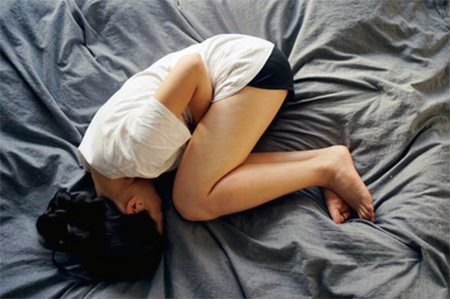What is a migraine and how is it treated?


Migraine is a neurological disorder distinguished by severe recurring headaches. The attacks happen from several times a year to several times a week. The headache episodes can be accompanied by general malaise, intolerance of light and sound, nausea, and vomiting.
Not all headaches can be classified as a migraine. Only if the diagnosis confirms that there are no organic (physical) causes of the disease, for instance, brain tumors, brain infection, and so on, then the diagnosis of migraine is made.
Why does migraine occur?
Migraine is a hereditary condition. It is believed to be related to anomalies in the structures responsible for carrying pain and other sensations.
Migraine incidence
One in seven adults suffers from migraines, so the disease is quite common. Migraines occur three times more often in women than in men. It usually begins in childhood or adolescence. In girls, migraines usually start around puberty. Since it hereditary, this disease is transmitted from generation to generation.
How does a migraine manifest?
All migraine symptoms occur during an attack that has four stages of development, although not all of them may be fully represented. The majority of people with migraines feel good between attacks.
The phase of precursors of migraine (prodrome) occurs earlier than all other manifestations of an attack and in no more than half of patients. If you have a prodrome, you may feel irritable, depressed, or tired for hours or days before the headache develops. On the contrary, some may notice an unusual increase in activity. Some individuals may have an increased appetite, some “just know” that an attack is approaching.

The aura, if any, is the next phase. One in three individuals with the condition have ever experienced an aura, and it may accompany not every attack. Aura is a reflection of a certain process (transitory and harmless to health) that occurs in the brain and is related to the mechanism of a migraine attack. It lasts 10-30 minutes, but it can be longer. The most frequent type is a visual aura. You may "see" flashes of light, or a multi-colored zigzag line extending from the center of the field of view to the periphery. Less commonly, sensitive symptoms occur - a tingling sensation or numbness that occurs in the fingertips on one side, spreads up to the shoulder, sometimes spreads to the cheek or tongue on the same side. Sensitive symptoms are almost always accompanied by visual disturbances. In addition, during the aura, there are speech difficulties or difficulty in finding words.
The headache phase is what brings the most discomfort. An intense headache can last from several hours to several days. Often headaches associated with the disorder occurs in one side of the head but can spread to the entire head. The most common area affected by migrainous pain is the frontal or temporal region, but it can be localized in any other area.
The character of pain in migraine commonly is throbbing or bursting. It gets worse with movement and physical effort. Nausea occurring during an attack is so intense that it frequently results in vomiting which sometimes help to relieve pain at least partially.
A person having a migraine attack becomes very sensitive to bright light and loud sounds.
The headache phase is followed by a resolution phase. During this period, you may again feel tired, irritable or depressed, it is difficult for you to concentrate. These symptoms can persist for up to 24 hours before you feel completely healthy.
What causes migraines?
There are many reasons for migraines and they are very diverse:

- Diet: some foods (and alcohol), but only in some patients; much more often, an attack can be caused by skipping meals, inadequate nutrition, caffeine withdrawal and insufficient water intake.
- Sleep: changes in sleep patterns, both lack of sleep and excessive sleep.
- Other vital factors: intense physical activity, long journeys, especially with a change of time zones.
- External: bright or flickering light, harsh odors, changing weather.
- Psychological: emotional stress or, oddly enough, relaxation after stress.
- Hormonal factors in women: menstruation, hormonal contraceptives, and hormone replacement therapy.
One of the most common causes of migraines is hunger or insufficient food intake. This is especially true for young patients – kids with migraines should not skip breakfast! In women, a significant potential cause is hormone fluctuations associated with the menstrual cycle.
Medicinal therapy for migraine
The therapy can be performed with specific and nonspecific action medications. The medications with a nonspecific action can lower pain syndrome and other symptoms not only in migraine but in other causes of pain syndromes.
Specific mechanism drugs, ergotamine derivatives, and triptans are effective only for migraine headaches.

Another group of used medications includes combination medications that contain analgesics of nonspecific action, caffeine, and specific action substances (ergot), as well as anti-nausea medications.
The optimal choice of therapy for the stopping of an attack is a difficult task depending on the intensity and duration of an attack, the set of symptoms, previously used medications, and the cost of therapy.
There are two approaches to the main medication selection - stepped and stratified:
- Stepped approach implies the start of the treatment with the cheapest and less effective medicines: the first step – simple painkillers (paracetamol, aspirin) and NSAIDs. If these drugs are ineffective or become ineffective over time, the second step begins with the use of combination drugs such as spazmalgon, pentalgin, kaffetin, kafergot, etc. In case the second step medications are ineffective, the third step is initiated that includes the use of specific anti-migraine therapy using both selective 5HT1 receptor agonists - triptans and non-selective 5HT1 receptor agonists of ergotamine preparations. Worth noting, the long-term use of painkillers, especially combined drugs, creates tolerance, i.e. drugs lose their effect. It leads to the chronic character of pain. The second drawback of this approach is that individuals with severe migraine attacks accompanied by vomiting shouldn’t even try using nonspecific drugs because they won’t help but can only worsen the condition.
- Stratified approach is made based on the assessment of the attack severity with the analysis of pain intensity and degree of disability caused by the disease. For patients with mild attacks, first-line medications can be sufficient (for instance, Cyproheptadine). For patients with severe attacks, the treatment should be started right away with more potent medications, for instance, triptans. It can allow avoiding in many cases calling an ambulance, quickly recovering the ability to work, and increasing the level of self-control in the patient, reducing the feeling of fear and helplessness before the next attack. However, patients with long-lasting severe migraine attacks should be hospitalized and treated in an emergency room or neurological department.
Migraine drugs by effectiveness/potency
Antiepileptic drugs:
- Sodium Divalproex
- Sodium Valproate
- Topiramate
- Antidepressants:
- Amitriptyline
- Venlafaxine
Beta-adrenergic blockers:
- Atenolol
- Nadolol
Alpha-2-adrenergic agonists:
- Clonidine
- Guanfacine
Beta-adrenergic blockers:
- Nebivolol
- Pindolol
Post by: Jacob Hansen, General healthcare practitioner, National health centre, Stavanger, Norway
(Updated at Apr 14 / 2024)
Periactin articles:
Some of the trademarks used in this Web Site appear for identification purposes only.
All orders are reviewed by a licensed physician and pharmacist before being dispensed and shipped.
The statements contained herein are not intended to diagnose, treat, cure or prevent disease. The statements are for informational purposes only and is it not meant to replace the services or recommendations of a physician or qualified health care practitioner. If you have questions about the drugs you are taking, check with your doctor, nurse, or pharmacist.